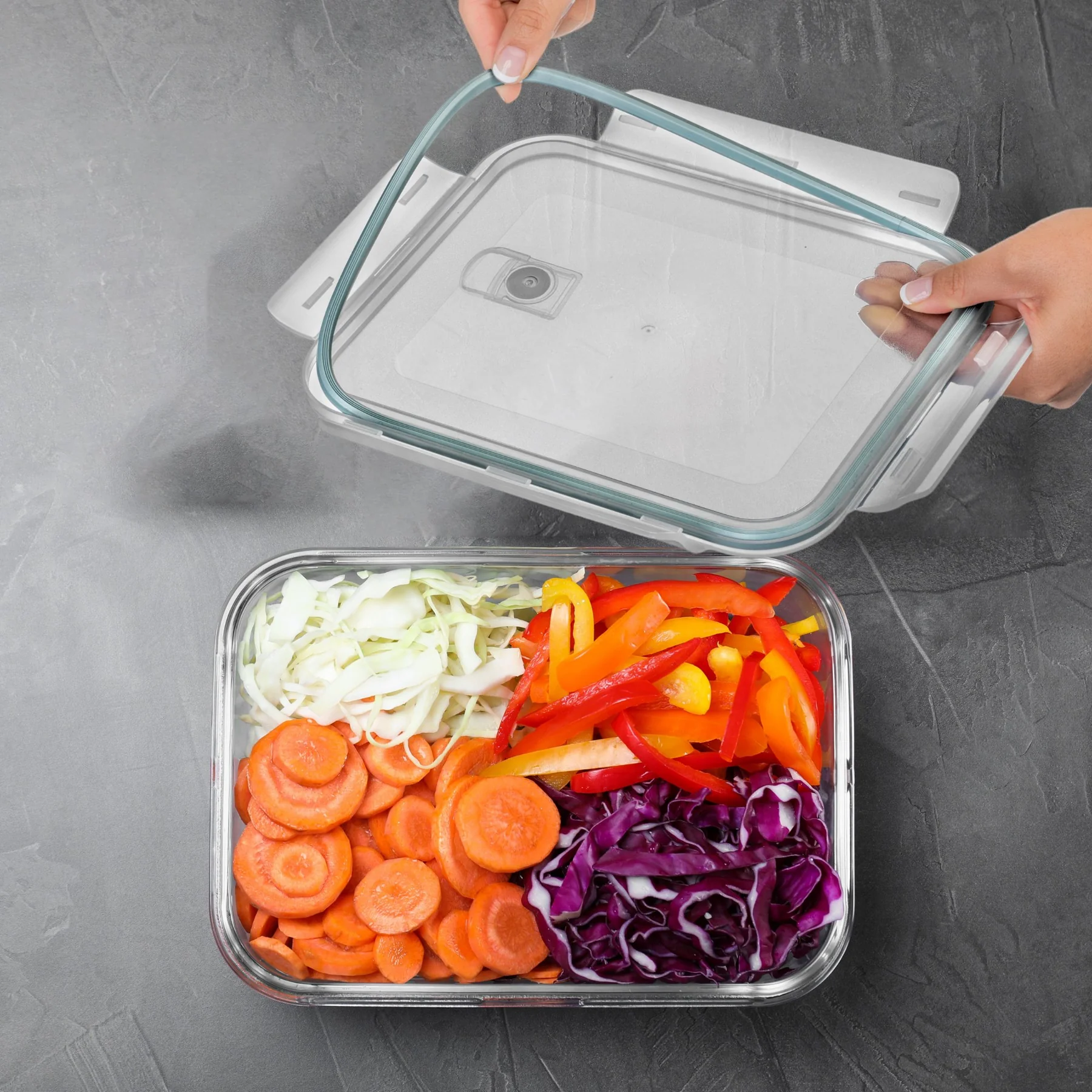Why Meal Prep is Essential for Winter Months
Winter is all about hearty, comforting meals—think soups, casseroles, and stews that warm you up from the inside out. But let’s be honest: with shorter days and longer to-do lists, who has the time to cook every night? That’s where meal prepping comes in handy. Preparing meals in advance not only saves time but ensures you’ve got a fridge full of wholesome, homemade meals that are ready to be heated up on those chilly evenings. And let’s not forget—winter foods, with their heavier ingredients and complex flavors, benefit from sitting a day or two in the fridge, soaking in all those spices. To make this process a breeze, though, you’ll need the right glass meal prep containers to store your winter feasts.
Factors to Consider When Choosing Meal Prep Containers
When it comes to choosing the best meal prep containers for winter recipes, you’re not just looking for a generic food storage solution. You need containers that can handle thick stews, dense casseroles, and potentially freezing temperatures. Let’s break down the key factors you should keep in mind.
Material: Glass vs. Plastic vs. Stainless Steel
The container’s material is crucial. Glass containers, while heavier, are fantastic for reheating and oven use. They don’t stain or hold onto odors, making them perfect for those tomato-based soups or creamy casseroles. Plastic is lighter and more portable, but you’ll want BPA-free versions to avoid chemicals leaching into your food. Stainless steel is another option, especially for those looking to go plastic-free. It’s durable, eco-friendly, and excellent for colder storage needs.
Size and Capacity: Tailoring to Winter Recipes
Winter recipes often come in large batches—who can resist making a huge pot of chili or a family-sized lasagna? Choose containers that have a range of sizes. Some days, you’ll want a single portion for lunch, while other days, you might need to store a whole casserole. Versatility is key!
Durability: Sturdy for Freezing and Reheating
Winter meals like stews and casseroles are best when reheated. Make sure your containers are microwave-safe and can withstand both hot and cold temperatures. Some winter recipes might even be prepared ahead and stored in the freezer, so durability is important.
Airtight and Leakproof: Keeping Your Meals Fresh
Imagine making a creamy butternut squash soup, only to have it leak in the fridge or your bag. Airtight and leakproof containers are non-negotiable. They lock in freshness and prevent spills, especially with those thicker, saucy winter dishes.
Top 5 Meal Prep Containers for Winter Recipes
1. Glasslock Oven-Safe Containers
Features and Benefits: These containers are 100% airtight and leakproof, making them perfect for soups and liquid-based dishes. Plus, they’re oven-safe, so you can cook directly in them, saving you dishwashing time.
Best for Hearty Soups and Stews: Winter soups need solid containers, and Glasslock is ideal because it won’t crack in the freezer or explode in the oven.
2. Rubbermaid Brilliance Food Storage Containers
Features and Benefits: These crystal-clear containers are perfect for fridge organization. With tight-sealing lids, they’re also stain-resistant, which is fantastic for those cheesy casseroles and tomato-based stews.
Best for Layered Casseroles and Lasagnas: If you’re whipping up a batch of lasagna, these containers allow you to store large portions without the fear of leaks or stains.
3. Bentgo Fresh Leakproof Lunch Box
Features and Benefits: This is a more compact option, great for meal prepping snacks and side dishes. Its compartments make it easy to portion out different foods.
Best for On-the-Go Winter Snacks: If you’re someone who likes to take your snacks on the go—think roasted nuts, cheeses, or even small servings of stew—the Bentgo is ideal.
4. Stainless Steel Bento Boxes
Features and Benefits: These eco-friendly, durable containers are perfect for cold storage and reheating. They don’t retain odors and are easy to clean.
Best for Cold Storage and Easy Reheating: Stainless steel containers can handle the freezer and are easy to throw in the oven for reheating, making them perfect for winter leftovers.
5. Pyrex Simply Store Glass Meal Prep Containers
Features and Benefits: A true classic, Pyrex is known for its durability and versatility. It’s oven, microwave, and freezer-safe, so it’s great for prepping, storing, and serving your winter recipes.
Best for Oven-to-Table Winter Meals: You can go straight from oven to table with these containers, making them perfect for hearty baked winter meals like gratins or cobblers.
How to Properly Store Winter Recipes for Maximum Freshness
Labeling and Organizing Your Meals
Meal prepping for winter can sometimes get overwhelming, especially with large batches. Use labels to note the contents and date when the food was prepared. This way, you’re not guessing when your delicious beef stew was cooked!
Best Practices for Freezing and Reheating Winter Dishes
To keep your meals tasting fresh, always allow your food to cool before sealing it in containers. This avoids condensation, which can lead to soggy meals when you reheat. If you’re freezing, leave a bit of room in your container for the food to expand. And when reheating, always stir your food to distribute heat evenly.
The Environmental Impact: Choosing Sustainable Containers
Winter is a great time to think about sustainability, especially as we tend to use more resources. Opting for eco-friendly containers like stainless steel or glass helps reduce plastic waste. Not only are these options better for the environment, but they also last longer, saving you money in the long run.
Final Thoughts: Choosing the Right Container for Your Winter Meals
When it comes to prepping your favorite winter recipes, having the right meal prep containers can make all the difference. From soups to casseroles, and snacks to desserts, the containers you choose need to be durable, versatile, and leakproof. Whether you prefer glass for its reheating capabilities, stainless steel for its eco-friendliness, or plastic for its lightweight convenience, there’s something out there for every meal prepper. Pick containers that fit your needs, and you’ll be set for the winter season!
FAQs
- Can I freeze food in glass containers?
Yes, but make sure the glass containers are labeled as freezer-safe. Always leave some room for the food to expand when freezing. - Are stainless steel containers microwave-safe?
No, stainless steel is not microwave-safe. You’ll need to transfer your food to a microwave-safe dish before reheating. - What size containers are best for meal prep?
It depends on the meal. Small containers are great for snacks and single portions, while larger containers are better for family-sized dishes. - Do plastic containers stain?
Some plastic containers can stain, especially with tomato-based sauces. Opt for stain-resistant options or use glass containers to avoid this. - How long can I store winter meals in the freezer?
Most winter meals can be stored in the freezer for up to three months without a loss in quality, provided they’re in airtight containers.

